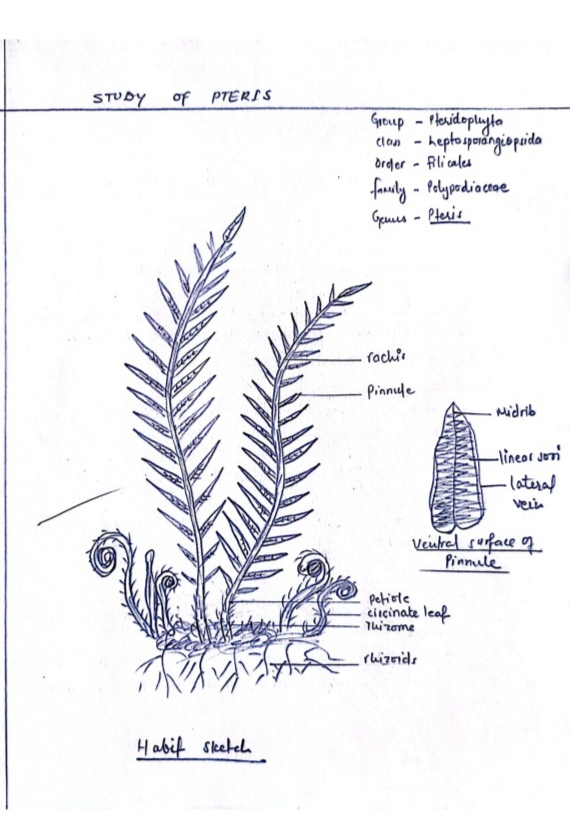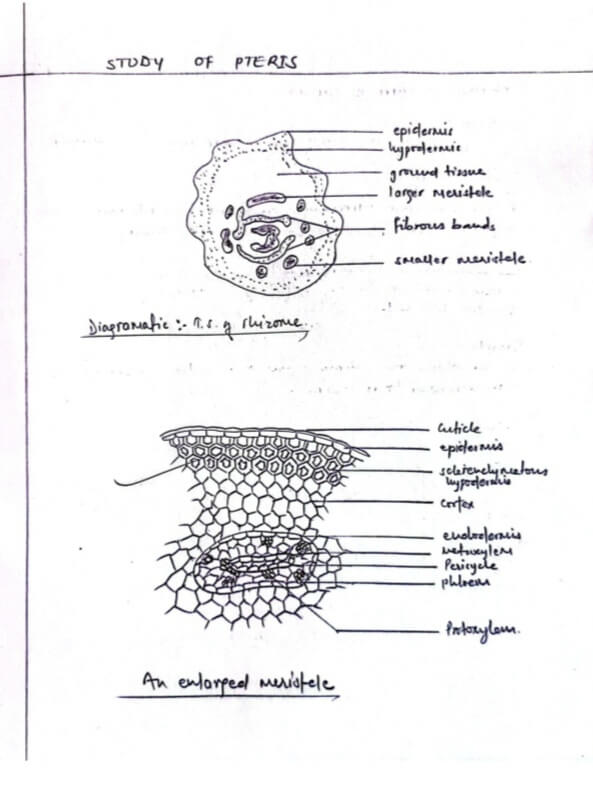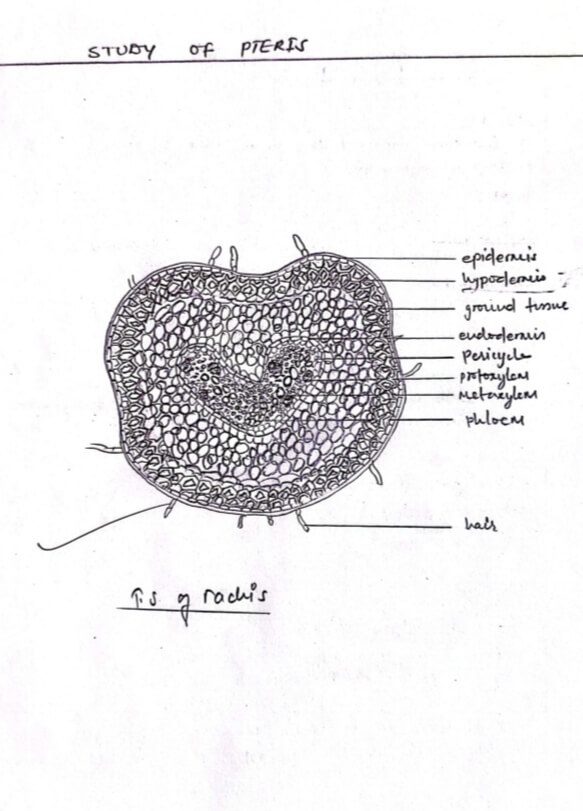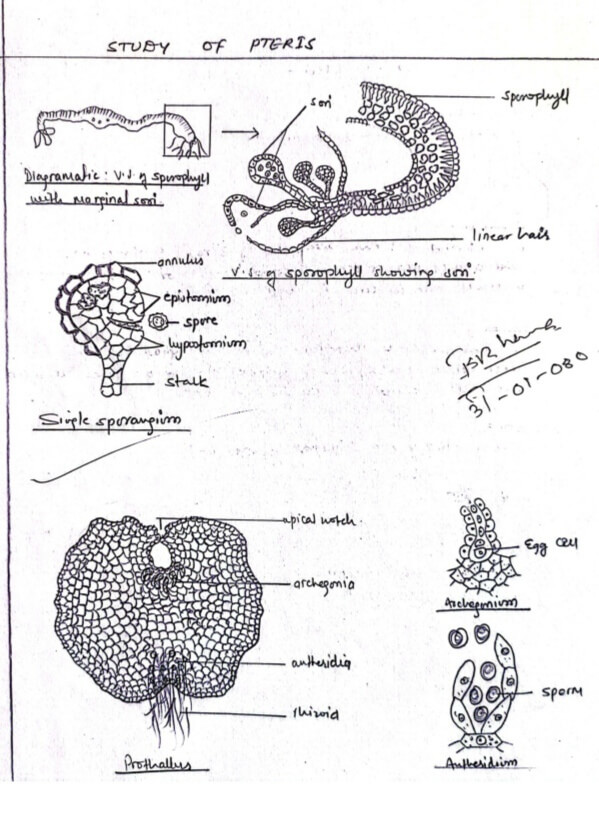COMMENTS ON PTERIS
Habit
Pteris is a cosmopolitan pteridophyte widely growing as perennial herbs on topical, sub-tropical mountain and road sides.
Morphological structures
i) Sporophytic plant:
The plant body consists of stem (rhizome), frond (leaf) and root. The rhizome is short semi- underground but some aerial portions may be semi-erect. The under surface of the rhizome gives small five adventitious roots and the upper surface gives rise to many pinnately Compound leaves called fronds.
ii) Rachis:
The plant has many leaflets called pinnae on either side. The shape of the pinnule is lanceolate but its size is smaller towards the base and apex of the rachis but longer at the middle.
iii) Fronds:
The young fronds are circinately coiled in words and covered by numerous brownish woody covering called ramenta. The lower surface of the leaflet bears linear hair. The sori are borne on the under surface of each nature pinnule.

Internal structure of rhizome:
i) Epidermis:
It is a single layered outermost covering cell with their outer walls thickened and cutinized.
ii) Cortex:
It is a multilayered region clivisible into 3-4 layers of sclerenchymatous hypodermis followed by a thick wide layer of parenchymatous cells forming ground tissues.
iii) Stele:
The stelar organization shows wide varieties in the same species of different stages. In pteris vittata, the stele is dicyclic dictyostele.
iv) Meristele:
The meristeles are arranged in two rings – outer smaller circular or oral Meristeles band, running dorsoventrally one above and another below the inner meristele. The meristele is Conjoint, concentric and closed type.
v) Endodermis:
It is uniseriate, one-celled thick layered composed of thin-walled barrel shaped compactly arranged parenchymatous cells having casparian strips on their radial walls.
vi) Pericycle:
It lies below the endodermis as one or two layers of thin walled Parenchymatous cell.
vii) xylem:
It is Mesarch in nature having central protoxylem surrounded by metaxylem.
viii) Phloem:
It lies immediately below the pericycle surrounding the metaxylem and is composed of sieve elements and phloem parenchyma.

Internal structure of rachis
i) Epidermis:
The outermost single celled layer is made up of thin walled parenchymatous cells.
ii) Cortex:
It is 2-4 layers of sclerenchymatous hypodermis followed by thin walled parenchymatous cells constituting the grand tissues.
iii) Endodermis:
It is a single celled layer composed of barrel shaped compactly arranged cells with casparian strips on their radial walls.
iv) Pericycle:
It lies in between the endodermis and phloem element as a thin walled cell layer.
v) stele:
It is a horseshoe shaped unbroken prostate lying at the center of ground tissue.

Asexual reproductive structures:
i) Sporophyll:
It reproduces asexually by producing spores on the under surface of a fertile frond called sporophyll. The sporophyte develops a number of sporangia grouped in sori.
ii) Sporangion:
It consists of a stalk composed of 3 rows of elongated cells and a biconvex of oval-shaped capsule or weed surrounded by a single layered capsule wall.
iii) Capsule:
The capsular wall along the radial sporangial margin is thickened to form annulus interrupted by a group of elongated and thin walled cells called stomium.
iv) Spore:
It is a minute, dark coloured spore with roughly tri-radiating mark en-sheathed by two layered spore coats- outer thick exine and inner thin delicate intire.
v) Prothallus:
It is the young gametophyte which is a small green flattened heart shaped with an apical notch. It is dorsoventrally thin with one- celled thick except at the notch which it is multicellular. It consists of both Male and female sex organs. The antheridia are located at the lower part mixed with rhizoids where as archegonia at the multicellular cushion of notch.

